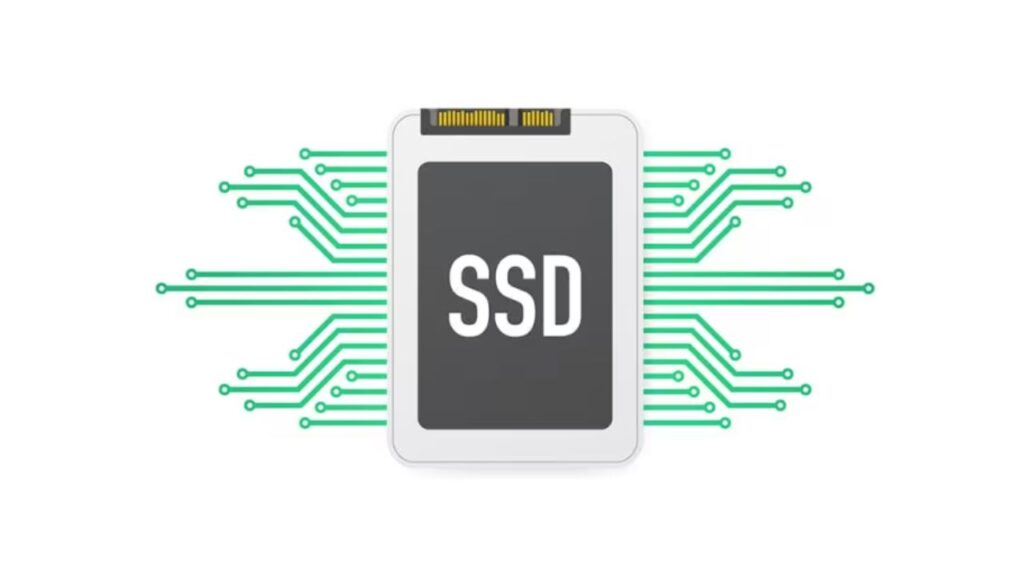Solid State Drives (SSDs) have become the standard for storage in modern computers due to their speed and reliability.
However, there are times when you may need to erase an SSD, whether it’s to prepare it for resale, recycling, or to start fresh with a clean slate.
Unlike traditional hard drives, SSDs require a different approach to securely erase data without compromising their performance and lifespan. In this guide, we will walk you through the steps to safely erase an SSD.
How does an SSD Work?
Traditionally, storage drives were mechanical spinner drives (HDDs). They have magnetic discs called platters and actuator arms that move across the platters to access the information written to them.
Since they’re mechanical, this is a slow process. The actuator arms have to manually move across the platters to access the storage, causing a small delay when retrieving data.
This was suitable for a long time and is still okay for certain types of files, but now, we have flash-storage-based hard drives: Solid State Drives (SSD). It is like this because there are no mechanical parts that move.
The SSD was a large leap forward in storage technology, as it allowed significantly faster read/write speeds.
But how does it work, and why is it so much faster?
The storage of an SSD is made up of small transistors and wires, with signals constantly going to them. These signals will turn into 1s and 0s on your SSD. Eventually, these pile up and make up the data that’s being written to the drive.
Transistors make up cells, and cells make up pages. This is where the data is stored. The more pages the drive has, the more room you have to write data. You’ve been using a form of flash storage for years: your USB thumb drive. USB flash drives use a similar technology to store their information.
Before You Begin
Before you start the erasure process, it’s crucial to back up any important data on your SSD. Erasing an SSD will permanently delete all its contents, so ensure you have a backup of any files you want to keep.
It’s also important to note that the process of erasing an SSD will wear out its memory cells to some extent, potentially shortening the drive’s lifespan.
However, this should be fine for most users, as modern SSDs are designed to handle numerous read and write cycles.
Method 1: Using Secure Erase
Secure Erase is a feature built into most SSDs that allows you to wipe the drive thoroughly. The process involves resetting the drive to its factory settings and erasing all stored data securely.
- Backup Your Data: As mentioned earlier, ensure you’ve backed up all the data you want to keep.
- Download Manufacturer’s Software: Many SSD manufacturers provide software tools for secure erasure. Download and install the appropriate software for your SSD. Some popular tools include Samsung Magician for Samsung SSDs, Intel SSD Toolbox for Intel SSDs, and Kingston SSD Manager for Kingston SSDs.
- Launch the Software: Open the software and locate the option for Secure Erase. This may vary from manufacturer to manufacturer but is usually clearly labeled.
- Select Your SSD: The software should detect your SSD. Could you select it from the list?
- Confirm Erasure: Confirm that you want to erase the drive. Be aware that this process is irreversible, and all data will be permanently deleted.
- Wait for the Process to Finish: The software will begin the erasure process. This may take some time, so be patient. Once it’s complete, your SSD will be wiped clean.
Method 2: Using a Third-Party Software
If your SSD manufacturer doesn’t provide specialized software for secure erasure or if you prefer an alternative method, you can use third-party software. One popular choice is the Parted Magic software, which includes a secure erase feature.
- Download Parted Magic: Visit the Parted Magic website and download the software. It’s available as a bootable ISO file.
- Create a Bootable USB Drive: Create a bootable USB drive using the Parted Magic ISO file. You can use software like Rufus to do this.
- Boot from the USB Drive: Insert the bootable USB drive into your computer and boot from it. You may need to change your BIOS settings to prioritize the USB drive.
- Launch Parted Magic: Once the system boots from the USB drive, you’ll find a variety of tools, including “Erase Disk.” Select this option.
- Select Your SSD: Choose your SSD from the list of available drives.
- Begin Erasure: Follow the on-screen instructions to initiate the secure erasure process. Be sure to confirm that you want to proceed.
- Wait for Completion: The process will take some time, and once it’s finished, your SSD will be securely erased.
Conclusion:
Erasing an SSD is a task that should be approached with caution, especially if you are looking to sell or dispose of your drive. Whether you use your SSD manufacturer’s software or a third-party tool, it’s crucial to follow the instructions carefully and ensure all your data is backed up.
Remember that the process of erasing an SSD involves a degree of wear and tear on the drive. However, modern SSDs are built to withstand numerous write cycles, so this should be fine with the drive’s lifespan. By following these steps, you can confidently and securely erase your SSD, leaving it ready for its next purpose.
For more article visit – peoplelaptop

